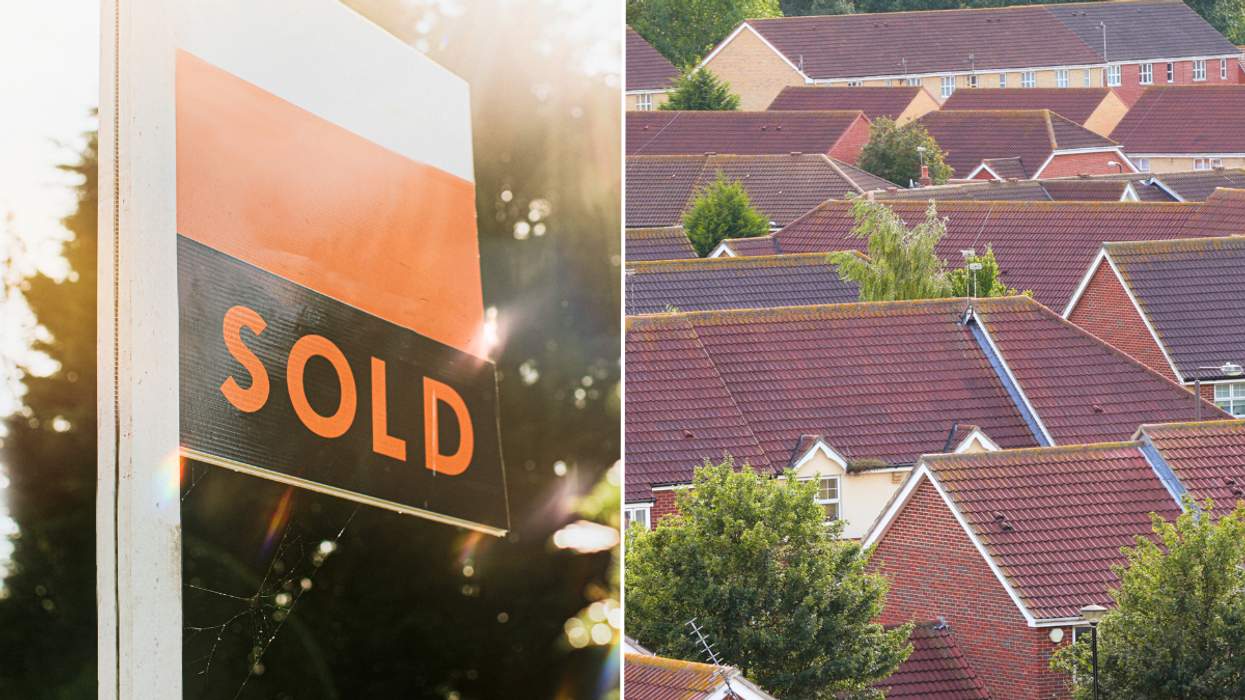Top 10 areas where house prices have dropped - full list of locations

Around 14 million homes saw a drop in value in the second half of 2023
| GETTY/PA
Around 14 million homes saw a drop in value in the second half of 2023
Don't Miss
Most Read
Latest
The average UK house prices have fallen by more than usual for the month of July, according to new figures.
The typical asking price for new sellers dropped by 0.4 percent or £1,617 month-on-month in July, settling at £373,493, down from June's figure of £375,110, Rightmove's data shows.
Tim Bannister, Rightmove's director of property science said: "Three major uncertainties hanging over the property market at the start of the year were when the first interest rate cut would be, and the timing and the result of the General Election.
"It's very early days, but the new Chancellor's immediate announcements on housebuilding targets and planning reform are positive signs that the Government is keen to get going with its manifesto pledges."
"With many areas of the market that could be improved, we hope that the new Government is able to get on with its plans and deliver sustainable housing policies that help the market in the medium to longer-term."
Although this news may be welcome for those looking to find cheaper property, there are millions of houses that have benefited from house price increases.

Millions of houses that have benefited from house price increases
| PAAn estimated 15 million UK homes have increased in value by more than one per cent in the first half of 2024, adding £2,400 typically to their value, Zoopla said.
While around just under seven million homes have also seen their value fall by at least one per cent in the same period.
This is the full list of locations with the biggest proportions of homes reducing in value in January to June 2024, according to Zoopla:
Area, average house price - percentage of homes decreasing in value by at least one per cent - average change over the past six months in cash terms (percentage)
1. Dumfries, £142,800 - 54 per cent - minus £2,100 (1.7 per cent)
2. St Albans, £519,100 - 49 per cent - minus £4,500 (one per cent)
=3. Dorchester, £340,100 - 44 per cent - minus £1,500 (0.6 per cent)
=3. Colchester, £314,900 - 44 per cent - minus £1,700 (0.6 per cent)
=3. Perth, £206.700 - 44 per cent - minus £200(0.1 per cent)
=6. Milton Keynes, £338,800, - 42 per cent - minus £1,800 (0.5 per cent)
=6. Harrogate, £325,300 - 42 per cent - minus £1,400 (0.5 per cent)
=8. Exeter, £324,600 - 41 per cent - minus £1,600 (0.5 per cent)
=8. Ipswich, £295,200 - 41 per cent - minus 0.6 per cent (£1,600)
=8. Galashiels (prices rose in this location overall but it still had a relatively high percentage of homes with house falls), £181,600 - 41 per cent - £900 (0.9 per cent)
Towns and cities in northern England are particularly likely to have experienced house price gains over the first half of 2024, analysis by a property website indicates.
Homeowners in Oldham, Wakefield and Durham were most likely to have seen the value of their homes increase in value by one per cent or more since the start of 2024, Zoopla calculated.
Owners of terraced homes, in particular, are typically seeing more gains than owners of other property types – which Zoopla said has been driven by the popularity of “value-for-money” homes among buyers facing higher mortgage costs.
Izabella Lubowiecka, a senior property researcher at Zoopla said: “Growing buyer confidence and a rising volume of transactions in the first half of 2024 are translating into firmer home values.
“Half of UK homeowners registered value increases this year – the highest proportion since December 2022. For many homeowners, equity gains are an important part of unlocking their next home move.”
Full list of locations with the biggest proportions of homes increasing in value between January and June, according to Zoopla.
Area, average house price - percentage of homes decreasing in value by at least one per cent - average change over the past six months in cash terms (percentage)
1. Oldham, £176,400 - 83 per cent - £7,100 (3.9 per cent)
2. Wakefield, £183,400 - 77 per cent - £4,700 (2.9 per cent)
3. Durham, £130,500 - 76 per cent - , £4,700 (4.2 per cent)
4. West Central London, £888,300 - 72 per cent - £17,700 (2.2 per cent)
5. Darlington, £156,800 - 71 per cent - £4,400 (3.1 per cent)
6. Watford, £497,000 70 per cent - £10,900 (2.3 per cent)
=7. Bradford, £171,300, 69 per cent - £4,500 (2.7 per cent)
=7. Stoke-on-Trent, £191,000 - 69 per cent - £4,600 (2.6 per cent)
=7. Wigan, £168,900 - 69 per cent - £3,900 (2.6 per cent)
10. Bath, £333,500 - 68 per cent - £6,300 (two per cent)
Interest rates were raised at 14 successive meetings of the MPC between December 2021 and August 2023, taking them from 0.1 per cent to their current level – driving up the cost of mortgages and loans for households and businesses.










